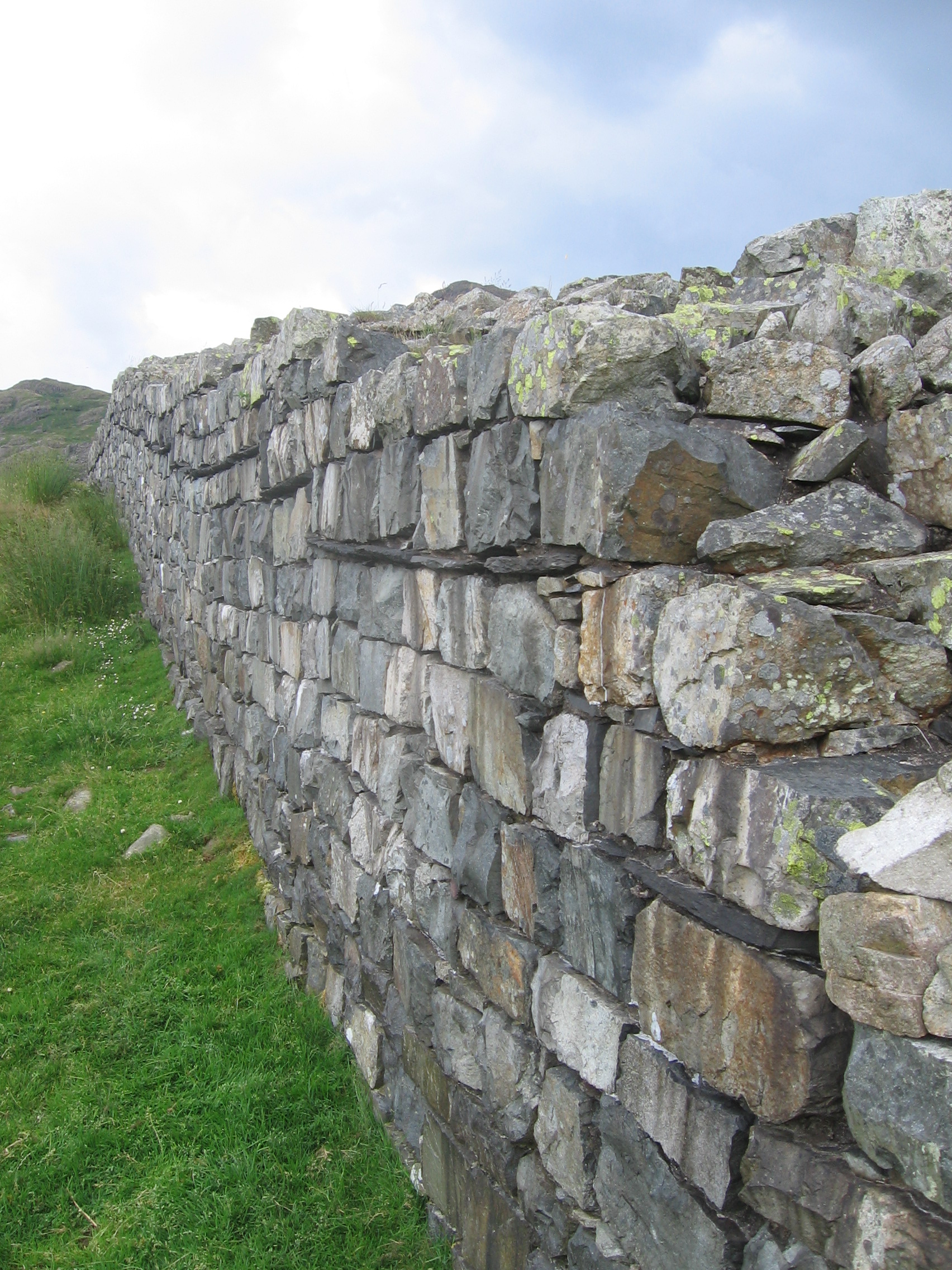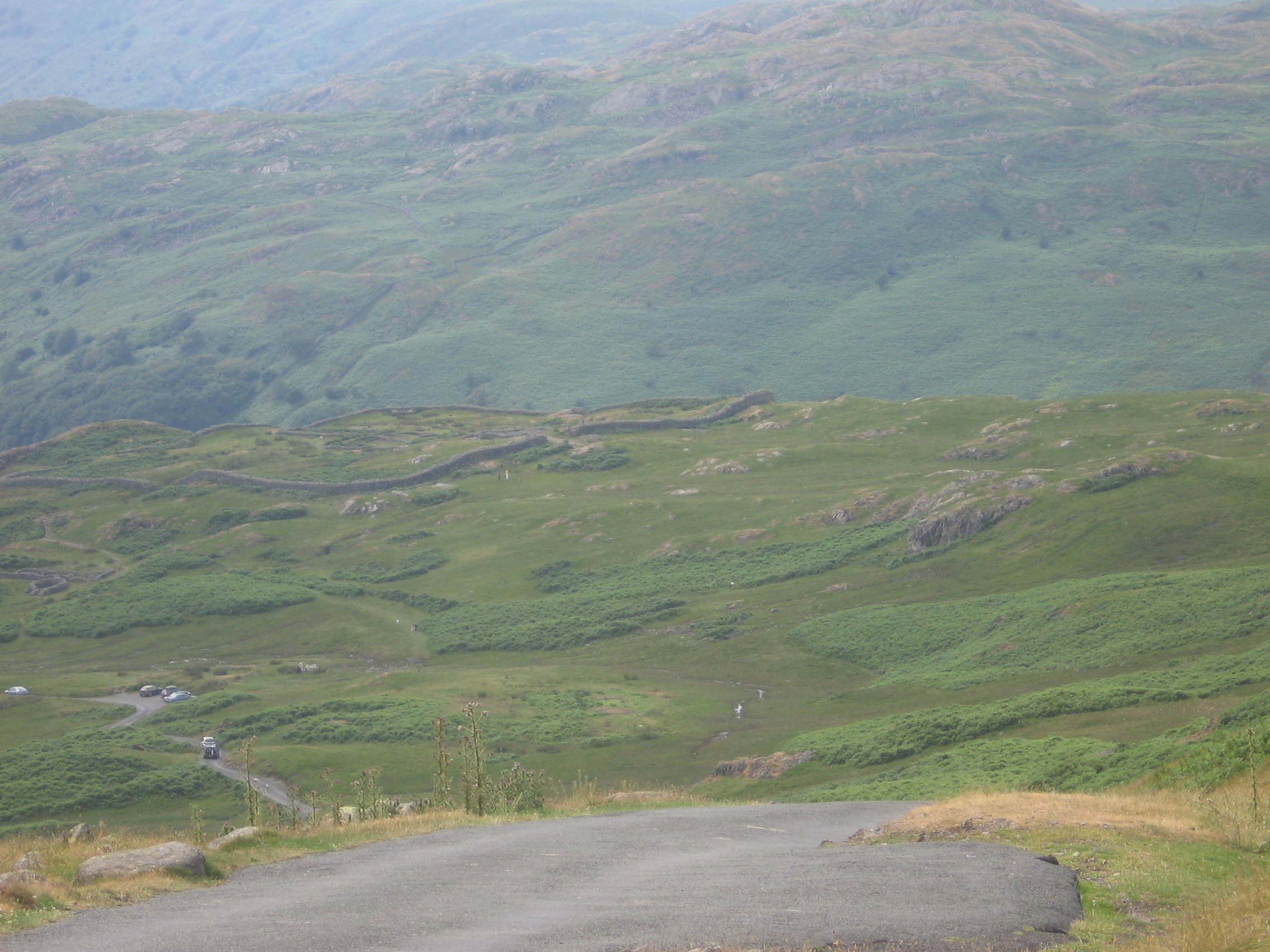
The twisted road that snakes itself over the pass isn’t for the faint hearted. Impassable for much of the winter it’s a gravity-defying ascent that tests your engine and your nerve as you make your way up and over the summit. From there the valley of Eskdale with its scattered farms and patchwork fields runs out into the sea. On a raised rocky plateau a couple of hundred metres from the road stands Hardknott Roman fort. Built by the emperor Hadrian in the 2nd century AD, its complete isolation, far from any settlements has kept its structure intact. It is one of the best-preserved Roman ruins in Britain, and the other day I went along with Kat and Susan to check it out.
Katherine Wynn and Susan Leedham studied English literature at Lancaster and U.E.A respectively, and Susan completed a Masters at Leeds. They are part of the Wordsworth Trust’s award winning trainee programme that each year takes some of the brightest graduates from around the country, to work as part of the curatorial team for a year, before moving on to museums and galleries around the country. The yearly rotation is one of the reasons the Trust is so dynamic and vibrant for both visitors and the permanent staff who work alongside the trainees on a daily basis.
Hadrian came to Britain in AD121 and spent almost two years here, during which time he embarked on a number of defensive projects in order to define and protect his empire. Hardknott was one in a series of forts linking the port of Ravenglass with the city of York. Built on a three and a half acre site overlooking the river Esk it commands a clear uninterrupted view across the valley. The perimeter walls are two metres high and almost as thick, with turrets at each corner and four gates facing north, south, east and west. Inside the fort the remains of the headquarters building, the granaries and the commandant’s house are still visible while outside the fort stand the circular bathhouse / sauna and the parade ground. An inscribed stone found at the site reads: ‘For the emperor Caesar Trajanus Hadrianus Augustus… the fourth cohort of Dalmatians made this.’
Before leaving Britain Hadrian personified the country as a goddess and had a shrine dedicated to her at York. Coins were also minted bearing her likeness. She was called Britannia.
Susan and Kat’s recipe for: A Little Bowl of Sunshine (i.e. Veggie Chilli)
Salt, pepper and any other herbs and spices you want to use (e.g. oregano, thyme, cumin, paprika, chilli powder)
Onion
Couple of carrots
Pepper, any colour
Sweet potato
Can of chopped tomatoes
Can of lentils
Can of red kidney beans
Chocolate (preferably dark)
Peel and chop the sweet potato, spread out onto a baking tray with olive oil and whatever herbs and spices you are using. Pop into an oven at 180°C for about ½ hour or so.
Meanwhile, chop the onion, carrots and pepper.
Start frying the onion first with oil, herbs and spices. Then throw the carrots in, then the pepper.
Mix in the chopped tomatoes and let it bubble away for as long as you like. Throw in some chocolate, taste and keep adding chocolate until you reach your desired level of chocolatey-ness.
At the end, mix in the lentils and the beans. Take the sweet potato out of the oven and mix that in too.
Enjoy!
Next week: Now you see it…?



Ab actu ad posse valet illatio.
pardon?